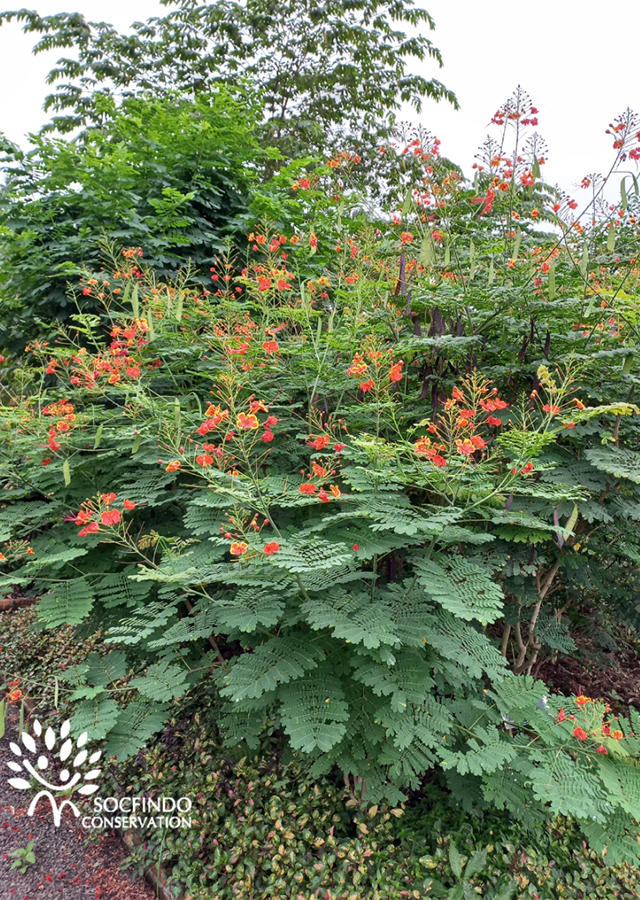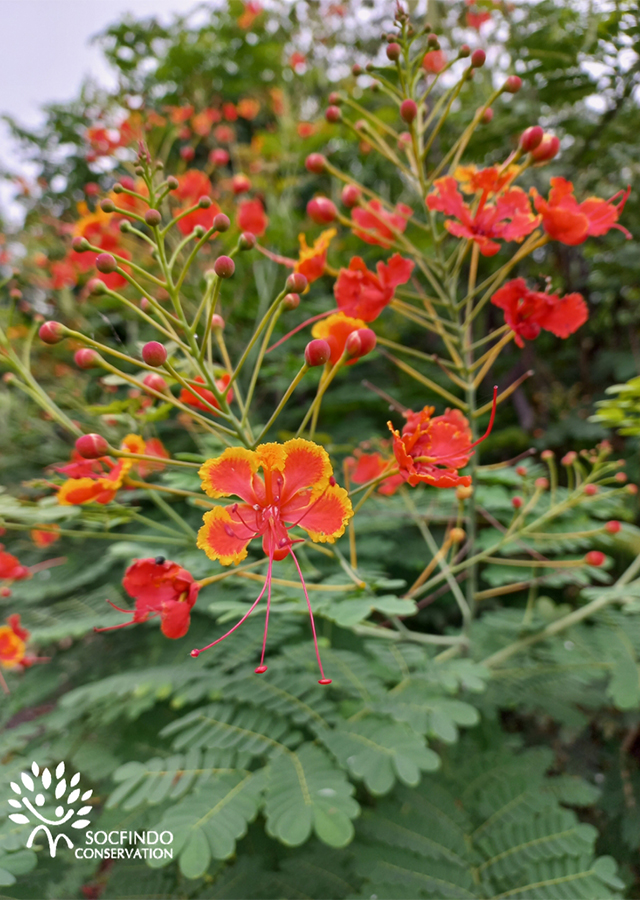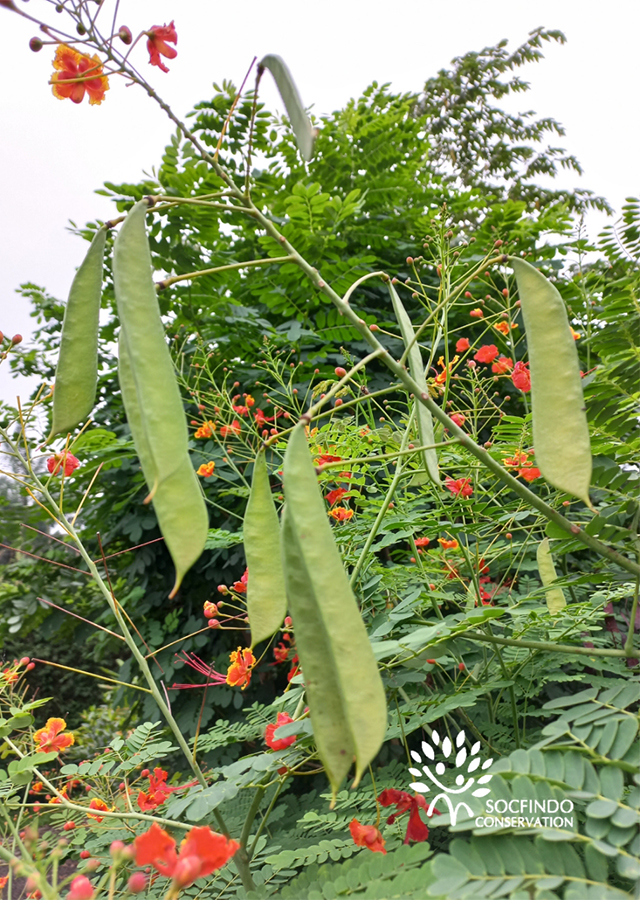Traditional Herbs from Caesalpinia pulcherrima
not_smooth_menstruation_
- Boil 15-30 g of fresh red peacock flower flowers.
- Let it warm/cool.
- Strain the boiled product and drink.
thrush
- Wash the peacock flower leaves thoroughly to taste.
- Boil the leaves until they boil.
- Let it warm then strain.
- Use the filtered water to gargle.
What is Caesalpinia pulcherrima Looks like??



Parts of Caesalpinia pulcherrima that could be used
- Leaves", "Seeds", "Bark", "Flowers", "Roots
Caesalpinia pulcherrima Distribution
Caesalpinia pulcherrima is native to Asia and was first introduced to the West Indies. C. pulcherrima has been cultivated primarily as a popular garden ornamental plant. C. pulcherrima is reported to have been used as food, in Mexico and Nicaragua, the green seed pods are boiled or cooked and eaten, the plant has been used in various cultures for medicinal purposes. Among other things, it is used to treat stomach disorders and uterine dysfunction. In the Amazon, this plant is used as an emmenagogue and to induce abortion. C. pulcherrima is also a common medicinal herb in Taiwan, and has been used in common treatments for everything from fever to malaria infections. A study found that the leaves of this plant contain antioxidant and antibacterial agents, especially for MRSA infections. Apart from being an ornamental and medicinal plant, it is reported that C. pulcherrima (leaf parts) are also used by the people of Panama as fish poison, just like in Nicaragua, where the leaves are thrown into the water to stun fish. C. pulcherrima is also It has been used to dye fabric, as the fruit and roots contain tannins.Agroecology of Caesalpinia pulcherrima
C. pulcherrima grows easily at an altitude of 0-2,000 m above sea level in moderately moist, fertile, well-drained soil but can grow in clay, sand, loam, alkaline to acidic, and salty soil types, with moderate aerosol salt tolerance. Light requirements are full sun, part sun or partial shade, but this species flowers best in full sun.
Morphology of Caesalpinia pulcherrima
- The roots\u00a0are red, round and not too long, including the prime root or taproot.
- The stem\u00a0green, turns grayish brown as the stem becomes more woody, covered with spines, which swell at the base when the stem matures.
- Leaves alternate, compound, bipinnate (double leafed), 4-8 pairs of pinnae, each with 7-11 pairs of leaflets elliptical, obtuse, pinnate, light green leaflets, unequal oblique about 2-2.5 cm long.
- Flowers are pink-red, odorless with long stamens and pistils. There is one modified petal that is smaller than 4 other petals.
- Pods are oval, thin, brown to black, up to 10 cm long. Pods split open to disperse single row of seeds.
- Seeds numerous, flat, dense, brown, usually 6-8 per pod." ]
Cultivation of Caesalpinia pulcherrima
Generative propagation by seeds. Before planting, the seeds are soaked in clean water for 8 hours to facilitate germination.
Caesalpinia pulcherrima, more details :
Chemical Content of Caesalpinia pulcherrima
Diterpenoids, isovouacaperol, sitosterol, and flavonoids (5,7-dimethoxyflavanone, 5,7-dimethoxy-3,4'-methylenedioxyflavanone, isobonducellin, 2'-hydroxy-2,3,4'-6'-tetramethoxychalcone and bonducellin, peltogynoid , bhonducellin, 6-methoxypulcherrimin, and homoisoflavonoids), gallic acid, red dye, gum, tannin, resin, benzoic acid, Cassane-type diterpene esters, pulcherralpin, lupeol, B-sitosterol, myricetin, saponins, phenols, terpenoids, tannins and alkaloids, pulcherrin J, 6- cinnamoyl-7-hydroxyvouacapen-5-ol. phytosterols, saponins, and lignin.
Benefits of Caesalpinia pulcherrima
Treats intermittent fever, treats colds, coughs, skin diseases, treats the liver, as a gargle for canker sores in the mouth and throat, treats erysipelas (bacterial skin infection) and inflammation of the eyes, as a tonic, treats diarrhea and dysentery, wounds, aches, pains chest pain, shortness of breath, kidney stones, malaria, bronchitis, flatulence, malignant tumors, can induce or cause abortion, acts as a laxative and emmenagogue (menstruation aids). Has antipyretic and antimicrobial activity.
Simplisia of Caesalpinia pulcherrima
- Prepare the red peacock flowers, wash them thoroughly with running water and then drain them.
- Dry them in the sun or in an oven at a temperature of\u00a040\u00b0C until the water content reaches 10%.
- After they are completely dry, store them in a place clean and airtight.
Another Facts for Caesalpinia pulcherrima :
Synonym of Caesalpinia pulcherrima
Caesalpinia hispida (G.Don) D.Dietr.Caesalpinia pulcherrima f. flava (F.T.Hubb. & Rehder) H.St.JohnCaesalpinia pulcherrima var. insignis Kuntze
Habitus of Caesalpinia pulcherrima
Bush. Annual shrub, 3-4 m high
Habitat of Caesalpinia pulcherrima
- Forest
- Bushland
- Land
No comments:
Post a Comment